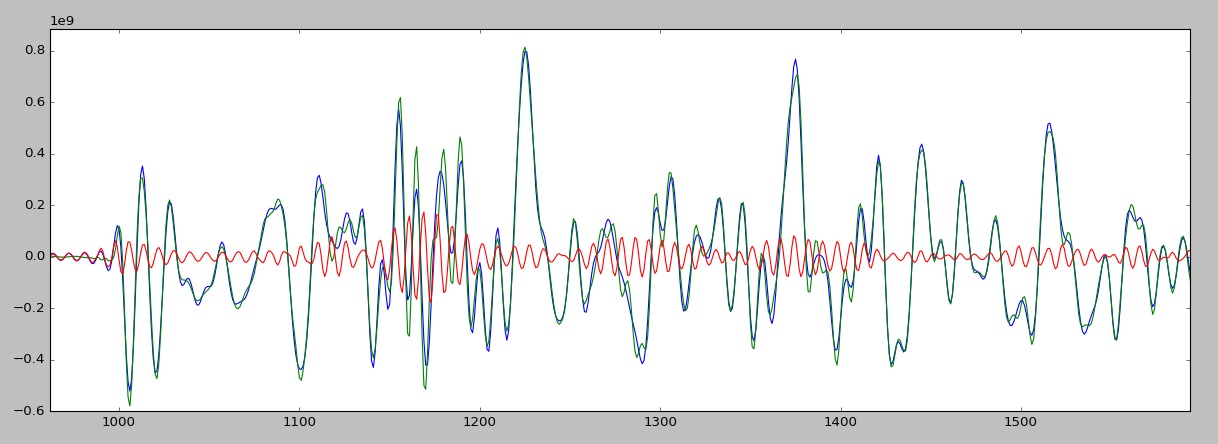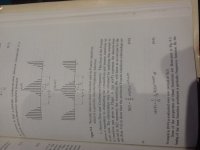Post #34402 showed enough difference between 16/44k to the original for me to call it not perfect. Audibility of such difference is a different matter altogether.... stop telling that 44.1/16 is not perfect without coming with any prove...
OMG, here we go again.Post #34402 showed enough difference between 16/44k to the original for me to call it not perfect. Audibility of such difference is a different matter altogether.
Hans
...showed enough difference between 16/44k to the original for me to call it not perfect. Audibility of such difference is a different matter altogether.
There appears to be some flaw in the sound of many CD recordings that can be heard at very low levels when played on a very low distortion system. High quality upsampling and conversion to DSD seems to help, but not completely remove all audible shortcomings. Most people would probably never notice the flaw(s) on typical reproduction systems since there is a whole lot of mid-level masking distortions and noises going on all at once. Almost sounds like one is hearing all there is on a CD. No so, on most systems unfortunately. Of course, talk in a forum is unconvincing (be it eyeballing or listening 🙂 ), thus the offer of visiting to hear for oneself. Nobody ever does visit though.
... Because it doesn't cost more, because I can always reduce its size and quality if I want. because more is better than just enough...
... most of the time hi def ARE more expensive. When it's the same price of course I take that download option. ...
That's the part that makes me feel uneasy: if we make an analogy with the movie business, first we had the VHS, then the DVD came and it was better, and so we had to re-buy all those American icons such as Star wars, Indiana Jones, and so on. And then BluRay came, and started the buying frenzy all over again. And now we have 4K...
Better than planned obsolescence: planned heist!
More like music, yes. However as Scott Wurcer just pointed out, the visual appearance of a new frequency (the so-called carrier) does not mean there is really an actual frequency there. Its just two frequencies beating, not suddenly three frequencies. Doesn't matter if the eye/brain wants to call a pattern a frequency. It really not unlike seeing a face in something that isn't really a face, same type of shortcut-algorithm pattern-recognition which is subject to errors. With a waveform, one must look in the frequency domain to see what frequencies are really there, not eyeball it.
Now, if we don't care about frequencies and only care about time-domain waveforms, eyeballing might be a somewhat more reliable indicator. However, without knowing how humans hear, and the range of variation in that in a large population of humans, we can't know which domain is useful to look at for audibility. IMHO probably hearing involves processing that is similar to some combination of time and frequency domain views, but does so to different degrees under different listening conditions/circumstances. Unless we know what we should be looking for we will continue to get nowhere.
3rd signal? I am just comparing two. And, those two have different periods. Why? Dont tell me its an illusion. Try another answer/explanation, pls.
To correlate to a sound, yes you might want to know more about the ear. However, this is electronics and waveforms. in and out. Comparing the same signal being processed. We dont want to see any ampl or time differences, ideally. The amplitude and the freq and envelope differences seem to me significant. No, I cant predict the sound from that... just it is worse than it needs to be and maybe if it was better, how would it sound then?
THx-RNMarsh
Last edited:
No Hans, I do not like debates. It is obvious the definition of the word perfect that we use do not match, and I will not participate on arguing over that.OMG, here we go again.
...I am just comparing two. And, those two have different periods. Why?
The answer will be found in the FFTs.
Really?? We have to start at square one with you also??
Since apparently nothing that can be humanly said here is of zero value to you, have you asked one of your workplace experts about the difference between modulation and interference?
Meantime, you may want to read about in the poor man's encyclopedia (although I am hot holding my breath you will do so).
Wave interference - Wikipedia
Amplitude modulation - Wikipedia
What would it take for you to stop this absurd debate? Everybody to concede that:
a) You are a genius that just discovered an unexplored path in signal processing?
b) Didn't pass through primary school, therefore they should STFU?
c) Is an idiot debating with you?
d) Is a poodle barking at a lion?
Or:
e) Shame you?
f) Quietly acknowledge the bores?
g) Ignore you?
h) Let go and bake a cake?
i) All of the above?
j) Anything else?
Last edited:
Post #34402 showed enough difference between 16/44k to the original for me to call it not perfect. Audibility of such difference is a different matter altogether.

What do we have here? That rather dramatic differences.....
-RM
That said, think about it. You pay for the CD burning, the cover and the transports. It's free for downloadable files: less expensive..
I'm retired, not heeled at all, and want high definition files. Because it doesn't cost more, because I can always reduce its size and quality if I want. because more is better than just enough.
I agree in the sense that if I purchase something, I would like to have the highest quality version of the file made available. If I purchased a photograph I would like the raw file, not a JPEG, even if I can’t see the difference.
3rd signal? I am just comparing two. And, those two have different periods. Why? Dont tell me its an illusion. Try another answer/explanation, pls.
Haven't all the posted examples come from LTspice, ie. not ideal?
Howie: Question for you. Back in the bad old days of CD being new there was a pre-emphasis feature. Did anyone actually use that in releases. I know that, bar KOJ few people adopted HDCD.
I know for a fact the some of my 1983 Bruce Springsteen did use it.
It wasn't as good as the vinyl but they still work. I saw very little that actually had it.
Scott Wurcer showed Cymbal recording, Green at 24/192k, Blue with all data >22050 Hz removed and the difference in Red. Start at Post #34358.What do we have here? That rather dramatic differences.....
Now, if we don't care about frequencies and only care about time-domain waveforms, eyeballing might be a somewhat more reliable indicator. However, without knowing how humans hear, and the range of variation in that in a large population of humans, we can't know which domain is useful to look at for audibility. IMHO probably hearing involves processing that is similar to some combination of time and frequency domain views, but does so to different degrees under different listening conditions/circumstances. Unless we know what we should be looking for we will continue to get nowhere.
I agree with Richard, in the electrical domain, copy input to output. In the acoustic domain, then yes, how we hear is important and where the psychoacoustic research is properly concentrated in my view.To correlate to a sound, yes you might want to know more about the ear. However, this is electronics and waveforms. in and out. Comparing the same signal being processed. We dont want to see any ampl or time differences, ideally.
HDCD - Boz Scaggs, Chris Issacs, Joni Mitchell had HDCD encoding
on one or two CDs
I have a few RR CDs that I really should rip and decode so see if I can hear the different. I know Keith appears to be a particular obsessive over SQ.
First theres a questions I have about AM. If I AM a signal(under modulating it) with a sine then AM it again with a cosine I get my original back. ( dont make me draw the picture). Does Fourier do this with the phase? Then we need to keep track of phase no?What do we have here? That rather dramatic differences.....
-RM
Im not sure were using fourier correctly. From Digital Signal Processing by William D Stanley pg245.
If Im reading this corectly, sampling makes the time function periodic and non/discrete which makes the freq function PERIODIC and discrete/non so a copy of the entire freq function arises around F=0 so filtering below 1/2 fs restores the entir function.
Edit:sorry about the pic quality but you can still read it
Attachments
Last edited:
- Status
- Not open for further replies.
- Home
- Member Areas
- The Lounge
- John Curl's Blowtorch preamplifier part III

